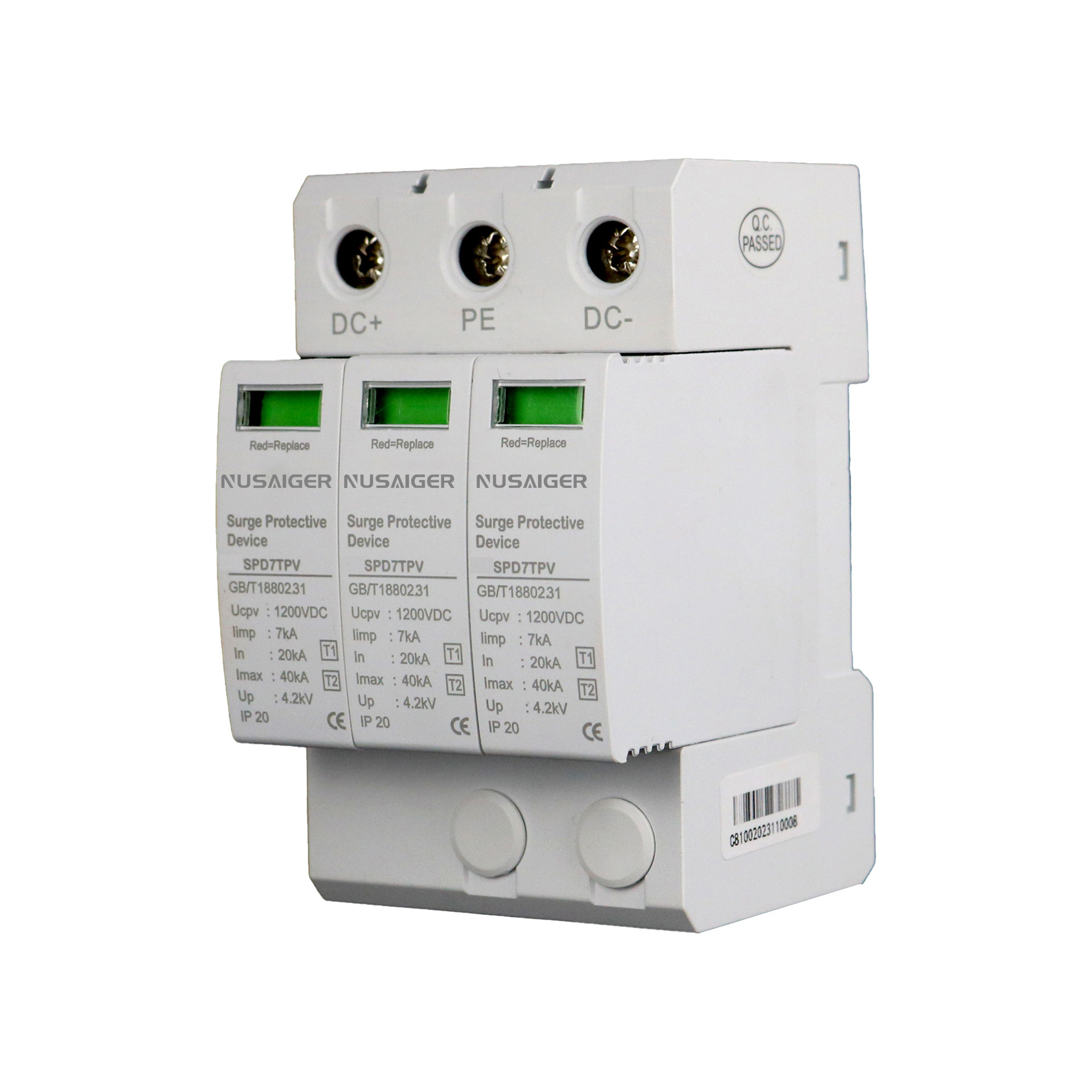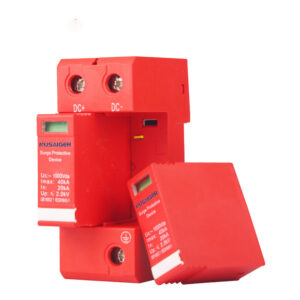PV Surge Protective Device Installation Best Practices and Common Mistakes
1. Introduction
Installing a PV Surge Protective Device (SPD) correctly is critical to ensure that solar PV systems are protected against lightning strikes, switching surges, and transient overvoltages. Incorrect installation can render even high-quality SPDs ineffective, leading to damage of inverters, combiner boxes, and monitoring systems.
This guide explains step-by-step installation practices, common pitfalls, and how to avoid costly mistakes during the installation of SPDs in residential, commercial, and utility-scale PV systems.
2. Pre-Installation Preparations
- Review System Design: Check PV array voltage, inverter input voltage, and combiner box layout.
- Select Correct SPD: Ensure DC-rated SPDs match system voltage and expected surge levels.
- Site Survey: Inspect mounting locations, environmental conditions, and accessibility for maintenance.
- Grounding Assessment: Confirm a proper grounding system for SPD discharge paths.
3. Installation Steps
The recommended installation steps for PV SPDs are:
- Mounting: Secure the SPD as close as possible to the equipment being protected (inverter, combiner box).
- Wiring: Use appropriately rated DC cables and minimize lead lengths to reduce voltage drop.
- Grounding: Connect the SPD to a dedicated grounding conductor. Ensure low-impedance connection to the system ground.
- Polarity Verification: Confirm correct positive and negative DC connections, especially for DC SPDs.
- Torque and Fastening: Tighten all connections according to manufacturer specifications to avoid overheating.
- Testing: Perform insulation resistance and continuity tests before energizing the system.
4. SPD Placement Recommendations
Strategic placement is essential for optimal surge protection:
- At Combiner Boxes: Protect aggregated string circuits and limit surge propagation.
- At Inverter DC Input: Safeguard sensitive power electronics from transients.
- At AC Output: Provide secondary protection for inverters and utility interfaces.
- Communication Lines: Include SPDs for monitoring or SCADA connections to prevent induced surges.
5. Common Installation Mistakes
Despite detailed guidelines, many PV projects experience SPD failures due to simple mistakes:
- Installing AC-rated SPDs on DC circuits.
- Using undersized grounding conductors or improper bonding.
- Excessively long SPD leads, increasing surge voltage stress.
- Ignoring manufacturer voltage and current ratings.
- Mounting SPDs in areas with poor ventilation, causing overheating.
- Failure to coordinate multiple SPDs, leading to protection gaps.
6. Safety Considerations
- Always de-energize circuits before installation.
- Use insulated tools and PPE suitable for DC high-voltage systems.
- Follow local electrical codes (NEC, IEC, UL) during installation.
- Ensure remote signaling connections are safe and isolated from high-voltage circuits.
7. Maintenance After Installation
Proper maintenance ensures continued SPD performance:
- Regular visual inspection for discoloration or damage.
- Verify grounding connections remain low-impedance.
- Test SPD indicators or end-of-life alarms where available.
- Replace SPDs after major surge events or after end-of-life indication.
8. Case Study: Avoiding Installation Pitfalls
A 10 MW solar farm experienced repeated inverter tripping due to lightning surges. Investigation revealed that SPDs were installed far from inverters with long lead wires and no proper grounding. After relocating SPDs close to inverters, shortening leads, and connecting them to dedicated grounding, surge-related failures were eliminated.
9. Conclusion
Correct installation of PV SPDs is just as important as selecting the right device. Following proper mounting, wiring, grounding, and testing procedures ensures that solar systems remain safe and reliable. Avoiding common mistakes can prevent costly downtime, protect sensitive equipment, and extend the life of your PV investment.



